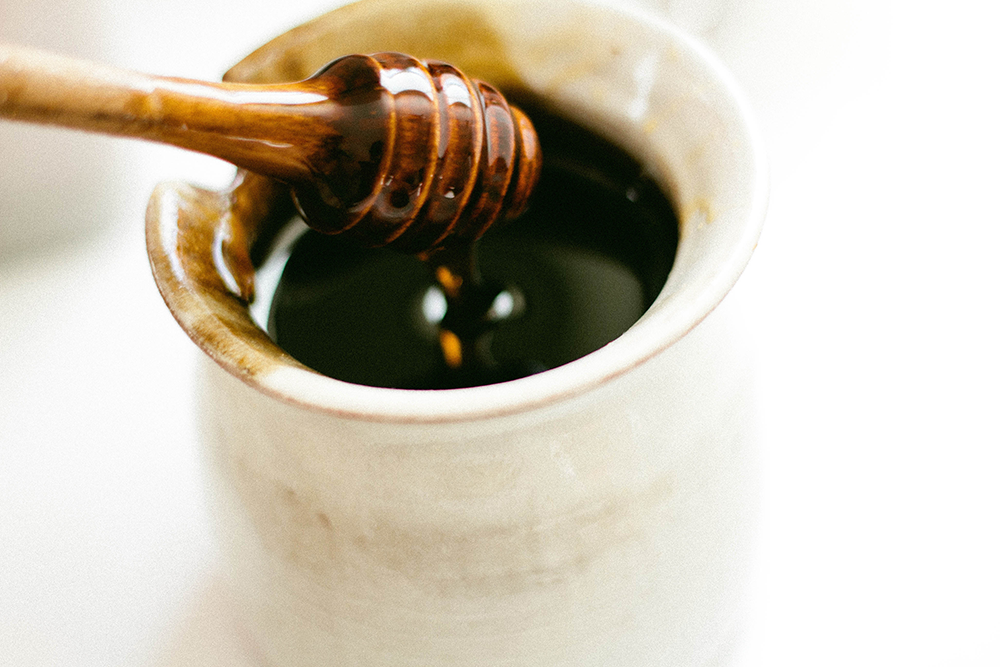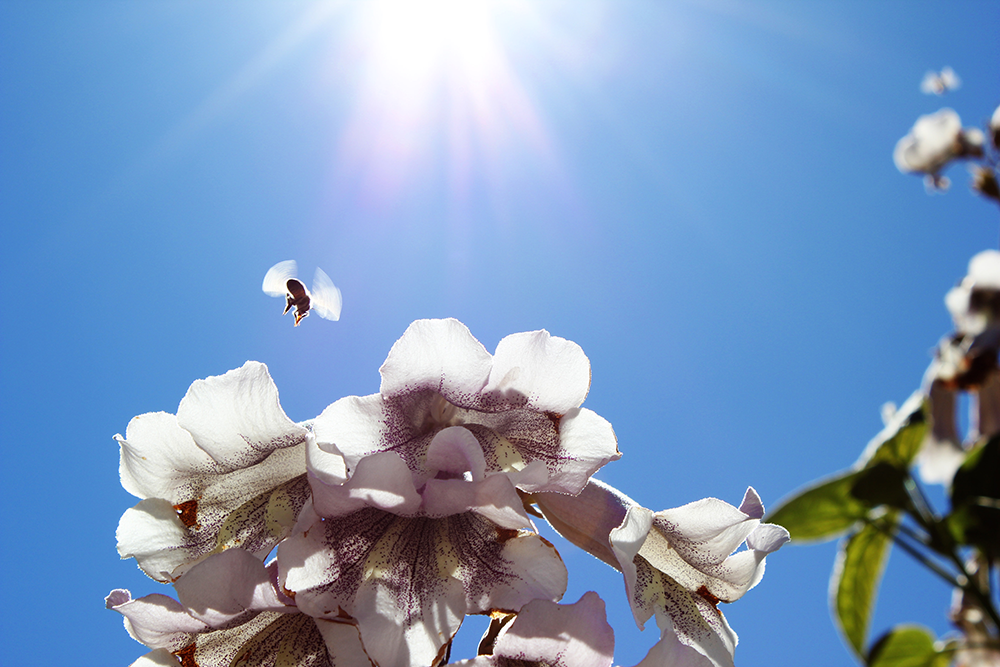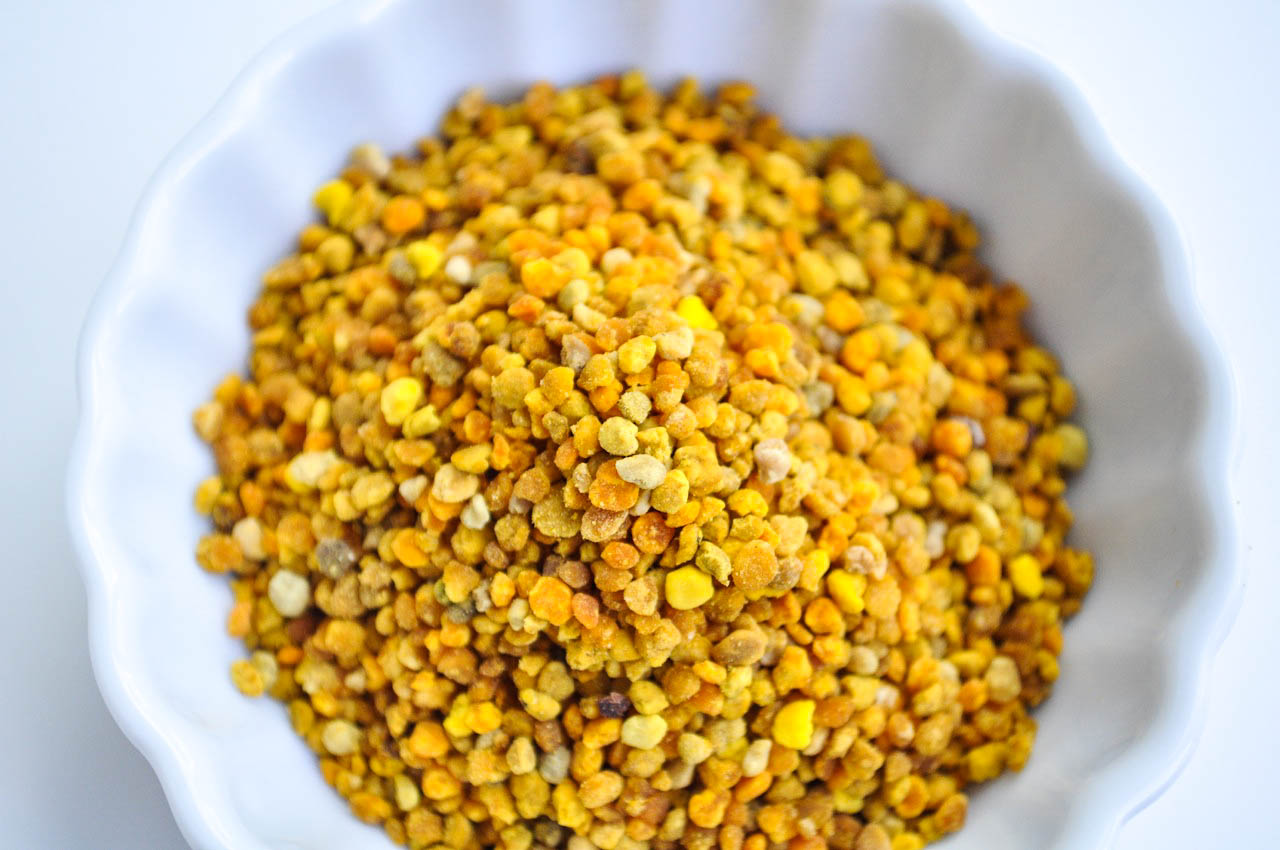We have a lot to thank the humble honeybee for. Its bounty of honey, honeycomb and bee pollen is deliciously, nutritiously and medicinally beyond comparison. But exotic pests threaten to wipe out our buzzy friend and its cornucopia of gifts. We investigate.
Think bees and the first thing you probably think of is honey. It was first used around 8,000 years ago when man depicted his honey-gathering exploits on the walls of his cave dwelling in Valencia, Spain. After this, honey became a staple ingredient in Ancient Egypt where it was used in food but also as an embalming fluid. As time went on, the practice of bee keeping (or apiary) to produce honey became a mainstay of civilised life.
GIFT #1: HONEY A LA CART
While honey is still popularly used in cooking and in recipes, it is has steadily enjoyed an increase in consumption due to its medicinal qualities. Whereas honey has always been used in what’s referred to as ‘folklore’ medicine or ‘alternative practice,’ it is now appealing to a much wider, more pharmaceutically biased, audience. The report, Therapeutic Manuka Honey: No Longer So Alternative1 puts the growth of honey in general medicinal use as fourfold: firstly, our increasing resistance to antibiotics sees us searching for other remedies; the influence of University lead research into honey’s effectiveness at healing wounds; the price of therapeutic honey (which is backing some of this research) and finally, the multitude of honey’s capabilities is piquing the interest of more and more scientists.
Certain types of honey are thought to contain over 100 compounds and a mix of minerals, vitamins, enzymes, amino acids, antibacterial, antifungal and antioxidant properties, with New Zealand’s manuka honey being one of the most popular choices. Be that as it may, research by the University of Technology2 in Sydney, published in December 2016, found that honey made by bees in Australia, feasting on their native manuka plants, is at least as powerful, if not more so, than New Zealand’s medical grade honey. Tantalisingly, and only at the tip of the multi-million dollar manuka industry iceberg, is the prospect that while New Zealand has only one type of Manuka plant, Australia has around 80.
Figuring out whether the other manuka plants produce the same potent medicinal honey, is key. To find this out, researchers at UTS are studying the compounds of locally produced honey from all over Australia. Putting money aside, the discovery is particularly important in an age where we are seeing increasing resistance to antibiotics. Dr Cokcetin, co-author of the study, told The Age: ‘One of the really special things about manuka honey is that it kills superbugs like golden staph.’ Encouragingly, the super-bug’s resistance to manuka hasn’t changed over the last seven years: ‘The antibacterial activity was tested seven years ago when we first collected [the honey samples] and we retested them just recently this year and we found that that activity has not changed, which was actually very surprising,” she told the ABC network.
When you consider the fact that it takes 60,000 bees travelling up to 55,000 miles and 2 million flowers for them to gather enough nectar to make 400g of honey, we begin to appreciate just how hard bees work – and thank goodness they do. According to the Australian Honey Bee Association, 65% of Australian agricultural produce relies on pollination by European honeybees with 35 particular industries solely reliant on their pollination3. But it isn’t just the honey that we are buying in the jar load. Honeycomb, another of the bees’ gifts, is also beneficial in both its taste and medicinal qualities.
GIFT #2: HONEYCOMB
You will know honeycomb as the hexagonal nest built by bees to store their larvae, honey and pollen. It is often sold directly by the producer as it takes skill (and time) to safely remove the wax cells from the hive. In fact, it’s the wax cells themselves that contain long chain fatty acids and esters, or alcohols, that have been proven to lower cholesterol. Research by the Department of Foods and Nutrition in Georgia, USA4 found the beeswax was able to lower low-density lipoprotein (LDL) by 21 per cent and raise high-density lipoprotein (HDL), or good cholesterol, by eight per cent.
Research, published in the Korean Journal of Internal Medicine, also links beeswax alcohols with improving liver function5 in subjects with fatty livers and details the promising results of a pilot study using beeswax alcohols over a period of six weeks to ameliorate the symptoms of osteoarthritis6.
With all the health benefits to be gained from bees’ output, it is no wonder that scientists are despairing at the latest news that bee populations in Australia are under threat from exotic pests. Some of these are already in Australia whilst the others are threatening to invade. Apiarists in Queensland and New South Wales spent much of the summer season on the lookout for the small hive beetle (SHB), an insect native to South Africa, which ransacks hives’ stores of larvae and pollen. The larvae also carry a fungus that causes any honey to ferment and turn to a slime-like liquid.
While the small hive beetle is actually on Australian shores, the arrival of large African hive beetle (LAHB) is predicted as imminent. After conducting research, Professor Ben Oldroyd, from the University of Sydney, has encouraged bio security risk levels to be raised from low to high. It is thought that the most likely way the beetle could arrive in Australia is while in its egg phase. Hope, therefore, lies in tougher bio security measures to keep the pest from Australian shores and in South Africa’s response to dealing with the LAHB problem. Apiarists there are blocking the beetles’ way into hives by making entrances smaller.
GIFT #3: BEE POLLEN
A threat of attack to our bee population is obviously worrying news, especially when so much research points to the significance of bees in respect to our health. Honey and honeycomb have fantastic health properties but it is bee pollen which is arguably the greatest resource. The pollen, food of the young bee, is 40% protein and thought to be able to provide humans with all the nutrients we need. In fact, so much so, those fearing the apocalypse choose to stock up on bee pollen. Fortunately, most of us will simply buy bee pollen in ground or granule form, taking it as advised.
The pollen, which can take a bee about a month to collect a teaspoon’s worth, contains minerals, vitamins, folic acid, fatty acids, calcium, iron, potassium and zinc. Research by the Institute of Apiculture in Russia7 found bee pollen is nature’s richest source of vitamins in one single form. It also notes that bee pollen’s levels of rutin, a bioflavanoid, has strong antioxidant properties that can produce collagen and help to use vitamin C.
More studies, this time carried out by German researchers, found a useful link between taking bee pollen and the alleviation of hot flushes and menopausal symptoms in breast cancer patients.8
However, perhaps bee pollens most renowned use is for its impact on hayfever syptoms. The Journal of Allergy9 found that there was a dramatic decrease of hayfever symptoms after sufferers regularly took bee pollen, with some even noting a 100% improvement since they began taking it. Amazingly, despite all the research and investigations, scientists are still unable to fully synthesize bee pollen, despite having replicated every component it contains. This has scientists stumped for an answer and left wondering what other mysteries they have yet to discover about the bees.
So it seems for bees and for humans to continue living together our scientists need to approach bees and their gifts from both sides of the lab. The first, in finding ways to prevent any further harm to bees from pests, and the second, in continuing their investigations into how humans can enjoy the health benefits of the bees’ gifts.
1Carter DA, Blair SE, Cokcetin NN, Bouzo D, Brooks P, Schothauer R and Harry EJ (2016) Therapeutic Manuka Honey: No Longer So Alternative.
https://www.ncbi.nlm.nih.gov/pmc/articles/PMC4837971/
2 Cokcetin NN, Pappalardo M, Campbell LT, Brooks P, Carter DA, Blair SE, et al. (2016) The Antibacterial Activity of Australian Leptospermum Honey Correlates with Methylglyoxal Levels. PLoS ONE 11(12): e0167780. https://doi.org/10.1371/journal.pone.0167780
3 Australian Honey Bee Association, http://honeybee.org.au/pdf/PollinationAwareFactSheet.pdf
4.Hargrove JL, Greenspan P, Hartle DK. Department of Foods and Nutrition, University of Georgia, Athens, Georgia 30602, USA. https://www.ncbi.nlm.nih.gov/pubmed/14988513
5 Effects of D-002, a mixture of high molecular weight beeswax alcohols, on patients with nonalcoholic fatty liver disease
José Illnait, Iván Rodríguez, Sarahí Mendoza, Yolanda Fernández, Rosa Mas, Mirtha Miranda, Jesús Piñera, Julio César Fernández, Meilis Mesa, Lilia Fernández, Daisy Carbajal, Rafael Gámez
The Korean Journal of Internal Medicine. 2013;28(4):439
http://kjim.org/journal/view.php?number=169122
6 Evaluation of the effect of D-002, a mixture of beeswax alcohols, on osteoarthritis symptoms
Roberto Puente, José Illnait, Rosa Mas, Daisy Carbajal, Sarahí Mendoza, Julio César Fernández, Meilis Mesa, Rafael Gámez, Pablo Reyes
The Korean Journal of Internal Medicine. 2014;29(2):191
http://kjim.org/journal/view.php?number=169259
7 Institute of Apiculture Liptovský Hrádok (IoA),
http://www.cvzv.sk/index.php/en/institutes/50
8 MÜNSTEDT K, VOSS B, KULLMER U, SCHNEIDER U, HÜBNER J. Bee pollen and honey for the alleviation of hot flushes and other menopausal symptoms in breast cancer patients. Molecular and Clinical Oncology. 2015;3(4):869-874. doi:10.3892/mco.2015.559.
https://www.ncbi.nlm.nih.gov/pubmed/26171198
9 P. Hemmers, Z. Li, J. Santilli To Bee or Not to Bee – Bee Pollen Sensitive St. Vincent’s Medical Center, Bridgeport, CTJournal of Allergy
http://www.jacionline.org/article/S0091-6749(11)01989-0/abstract
Michelle Hubbard is a UK-born writer living in (and loving) New Zealand. An experienced writer, Michelle has worked women’s monthly magazines such as Good Housekeeping and SHE and as a journalist for The London Evening Standard and New Woman’s websites. Additionally, she wrote her own parenting blog while living in the UK. Michelle qualified as a personal trainer in 2005. Although she no longer trains, she still participates in regular exercise such as CrossFit, Zumba, yoga and running.





